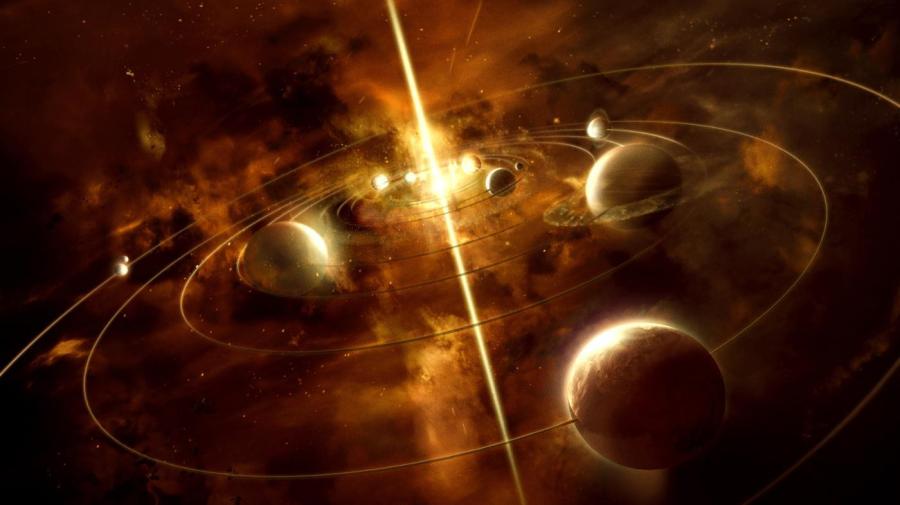What Is Dust Cloud Theory?

Cloud theory, sometimes called nebula theory, is a model of the early solar system that describes the formation of the Sun and planets. In this model, the solar system formed out of a cloud of dust in a protoplanetary nebula known as a stellar nursery.
The particles in the cloud were generally small, but they exerted a slight gravitational force on each other. This force gradually caused the cloud to collapse toward a common center of gravity. As the cloud fell inward, the angular momentum of its particles was conserved and imparted a spinning motion to the dust. This spin was in the direction and the plane of the planets’ present orbits.
Gas at the center of the cloud, mostly hydrogen, formed an ever-enlarging mass that warmed as the cloud material fell into it. Eventually the heat of the collapse rose high enough to trigger fusion among the hydrogen nuclei in the mass. Hydrogen fusion releases energy, which gradually worked its way to the surface of the early sun before escaping as light, heat and a stream of particles known as the solar wind. The solar wind blew away much of the remaining cloud, leaving only the planets, comets and asteroids that had accreted in the swirling dust.





